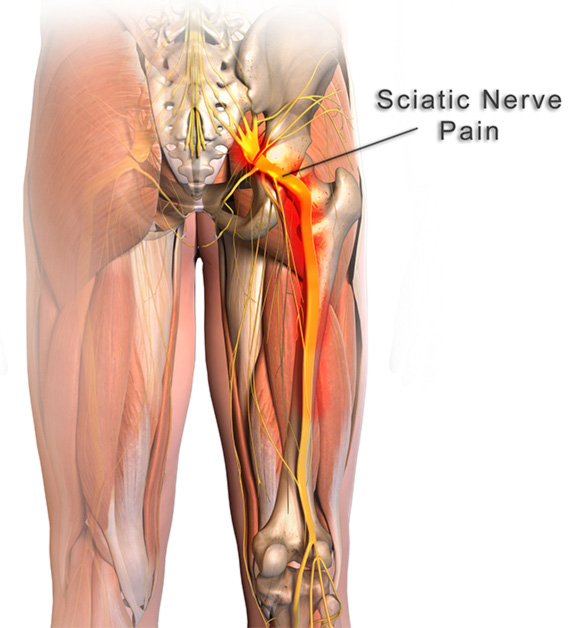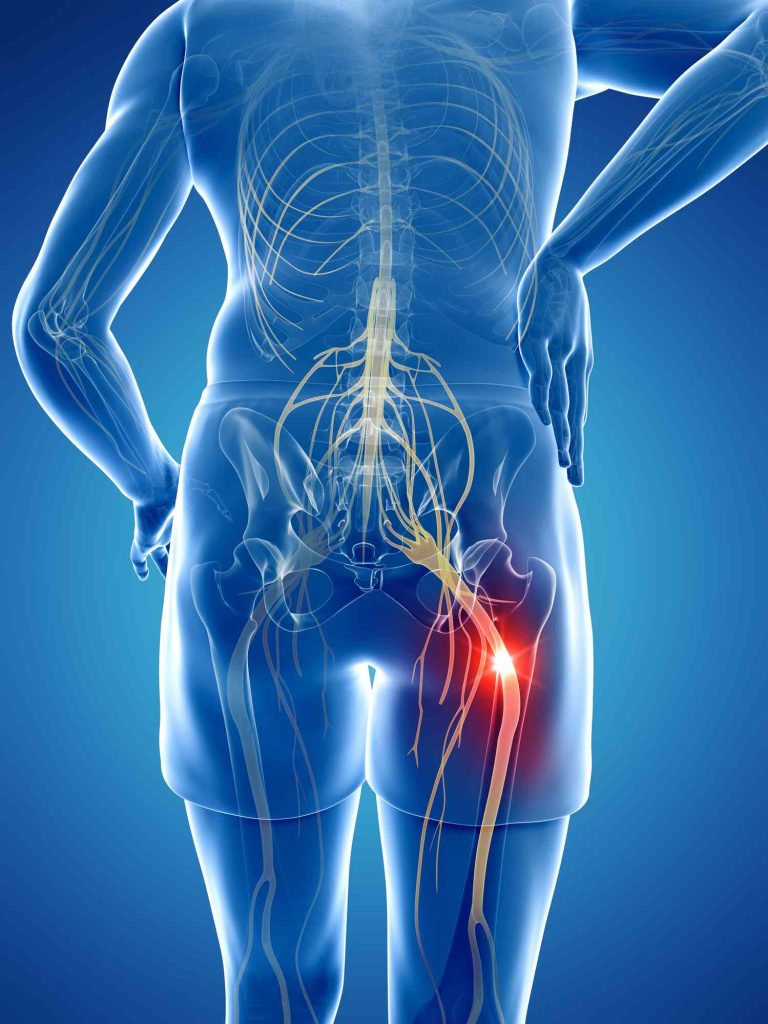Can Sitting Too Long Cause Sciatica? Understanding the Link
Yes, sitting too long can indeed cause sciatica. Sciatica is a condition characterized by pain radiating along the sciatic nerve, which runs from the lower back down the back of each leg. Prolonged sitting can exacerbate this condition, leading to discomfort and potential complications for sciatica patients.
The Research: Prolonged Sitting as a Risk Factor
According to a study published in the Journal of Neurosurgery: Spine, prolonged sitting is a significant risk factor for developing sciatica. The research found that individuals who sit for extended periods are more likely to experience sciatic nerve pain compared to those with a more active lifestyle. This correlation highlights the importance of addressing sedentary behavior in managing sciatica.
Understanding the Mechanism: Pressure and Irritation
Sitting for prolonged periods can lead to increased pressure on the sciatic nerve, causing irritation and inflammation. The sciatic nerve originates in the lower back and travels through the buttocks and down the legs. When pressure is consistently applied to this nerve, it can result in pain, tingling, numbness, and weakness in the lower back, buttocks, and legs. Therefore, sciatica patients are advised to limit their sitting time and incorporate regular movement into their daily routines.


Strategies for Management: Exercise and Ergonomics
Engaging in physical activity and adopting ergonomic practices can help alleviate sciatic nerve pain caused by prolonged sitting. Exercise, such as stretching, yoga, or low-impact activities like swimming, can improve flexibility, strengthen muscles, and reduce pressure on the sciatic nerve. Additionally, using proper posture and ergonomic equipment while sitting can help maintain spinal alignment and relieve strain on the lower back and legs.
Weight Management and Lifestyle Modifications
Furthermore, maintaining a healthy weight and avoiding excessive sitting can also contribute to managing sciatica. Excess weight can put added pressure on the spine and exacerbate nerve compression, leading to increased sciatic nerve pain. Therefore, maintaining a balanced diet and incorporating regular exercise can support overall spinal health and reduce the risk of sciatica flare-ups.
Tips for sitting with sciatica
- Use Proper Posture: Sit upright with your back against the chair and your feet flat on the floor. Keep your shoulders relaxed and avoid slouching or leaning forward, as this can strain the lower back and exacerbate sciatic nerve pain.
- Support Your Lower Back: Use a cushion or lumbar roll to support the natural curve of your lower back. This helps maintain proper spinal alignment and reduces pressure on the sciatic nerve.
- Take Regular Breaks: Avoid sitting for long periods without breaks. Stand up, stretch, and walk around every 30 minutes to an hour to relieve pressure on the lower back and improve circulation.
- Adjust Your Chair: Use an ergonomic chair with adjustable height, backrest, and armrests. Ensure that your chair provides adequate support to your lower back and promotes a comfortable sitting position.
- Use Proper Seat Cushions: If you’re sitting for an extended period, consider using a seat cushion designed to distribute weight evenly and reduce pressure on the tailbone and lower back.
- Engage in Gentle Stretching: Incorporate gentle stretching exercises for the lower back, hips, and legs to improve flexibility and relieve tension in the sciatic nerve area.
- Avoid Crossed Legs: Crossing your legs while sitting can exacerbate sciatica symptoms by putting additional pressure on the sciatic nerve. Keep both feet flat on the floor or use a footrest if needed.
- Stay Active: Regular physical activity can help strengthen muscles, improve flexibility, and reduce the risk of sciatica flare-ups. Incorporate activities like walking, swimming, or yoga into your daily routine.
- Manage Stress: Emotional stress can contribute to muscle tension and exacerbate sciatica symptoms. Practice stress-reducing techniques such as deep breathing, meditation, or mindfulness to promote relaxation and pain relief.
- Consult a Healthcare Professional: If you’re experiencing persistent or severe sciatica symptoms while sitting, consult with a healthcare professional. They can assess your condition, provide personalized recommendations, and suggest treatments such as physical therapy, medication, or other interventions.
Conclusion
In conclusion, sitting too long can indeed cause sciatica or worsen its symptoms for individuals already experiencing this condition. It’s crucial for sciatica patients to be mindful of their sitting habits and incorporate strategies to minimize prolonged sitting. Regular physical activity, proper posture, and weight management are key components of managing sciatic nerve pain associated with sedentary behavior.
Seeking Guidance and Support
For more information and tips on managing sciatica, consult reputable healthcare resources such as Medcareline.com, where you can find informative posts tailored to sciatica patients’ needs. Therefore, adopting a proactive approach to lifestyle modifications can help alleviate sciatic nerve pain and improve overall quality of life for individuals dealing with sciatica. By prioritizing movement, ergonomics, and healthy habits, sciatica patients can take control of their condition and experience relief from persistent discomfort.
Frequently Asked Questions
Q: How often should I take breaks from sitting to prevent sciatica?
A: It’s recommended to take short breaks from sitting every 30 minutes to an hour. During these breaks, engage in gentle stretching, walking, or changing positions to relieve pressure on the lower back and sciatic nerve. Incorporating regular movement into your daily routine can help prevent the onset or worsening of sciatica due to prolonged sitting.
Q: Are there specific sitting positions that can worsen sciatica symptoms?
A: Certain sitting positions, such as slouching or sitting with crossed legs, can increase pressure on the lower back and sciatic nerve, potentially aggravating sciatica symptoms. Maintaining proper posture and using ergonomic chairs or cushions to support the lower back can help alleviate pressure and reduce discomfort while sitting.
Q: Can using a standing desk help alleviate sciatica caused by prolonged sitting?
A: Using a standing desk or adjustable workstation can be beneficial for alternating between sitting and standing throughout the day, reducing the continuous pressure on the lower back and sciatic nerve. However, it’s essential to maintain proper posture and take regular breaks from standing to avoid musculoskeletal issues. Consulting with a healthcare professional or ergonomic specialist can help determine the most suitable workspace setup for managing sciatica symptoms.
Q: Can sitting on a hard surface versus a soft surface impact sciatica symptoms?
A: The type of surface you sit on can affect sciatica symptoms differently for individuals. Some may find relief by sitting on a firm surface that provides support and maintains spinal alignment, while others may prefer a softer surface that reduces pressure on sensitive areas. Experiment with different seating options and use cushions or lumbar supports as needed to find what works best for your comfort and pain management.
Q: Is standing for extended periods a better alternative to sitting for sciatica patients?
A: While standing can reduce pressure on the lower back compared to sitting, standing for long periods without breaks can also lead to muscle fatigue and discomfort. It’s essential to find a balance between sitting, standing, and moving throughout the day to prevent excessive strain on the spine and sciatic nerve. Incorporating ergonomic principles into both sitting and standing positions is key to managing sciatica-related discomfort.







